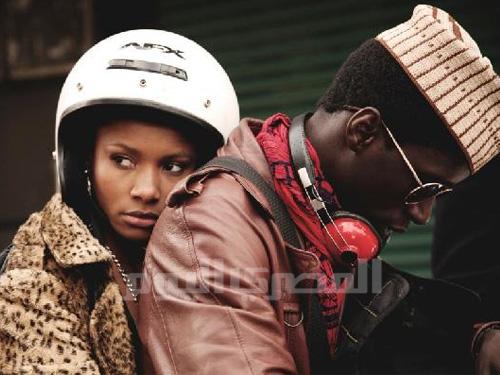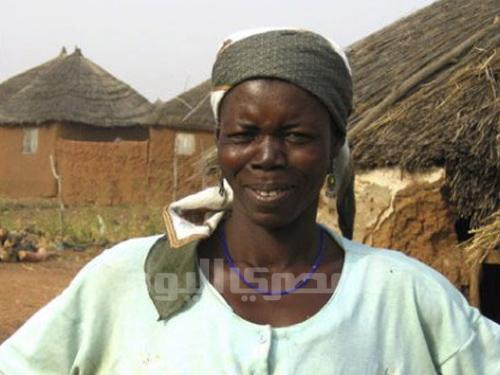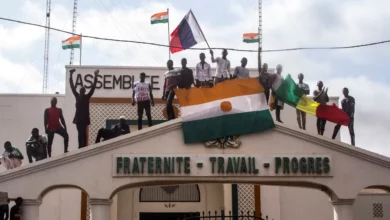
Those who closely followed the program of the first Luxor African Film Festival could see certain themes running across feature, short and documentary films. Most of them were inspired by the social, cultural and political realities of the continent.
Between myth and legend
Popular myths and legends that permeate African societies are common and salient elements in African cinema.
“Soul Boy,” directed by the Kenyan Hawa Essuman, garnered the Best Feature Film award. The film blends mythical stories into the adventurous journey of a boy who tries to save his father’s soul. The father lost his soul gambling, so the young protagonist seeks the help of the town’s sorcerer, who guides him to fulfill seven hefty tasks, following the signs of the sun. Upon their completion, his father would regain his soul.
Essuman may make use of sorcery in “Soul Boy,” but the assigned tasks and solutions to the family’s problems are really about overcoming social challenges.
In “The Conquest of Samanayana,” Mali director Sidy F. Diabaté, however, centers the plot almost entirely on witchcraft without overtly challenging the idea. The historical fantasy takes place in the early 19th century. It tells the story of the ambitious young king of Kabira who tries to annex all the surrounding cities. But, the city of Samanyana remains impossible to capture, as its king is a strong sorcerer who hides his soul in a crocodile’s stomach. The young king sends him a beautiful woman who lures him with her beauty to drink a magic potion that makes him submissive to the king of Kabira.
The Zambian short, “Mwansa, the Great,” is another film that refers to local stories of magic, albeit to celebrate children’s innocence and imagination in the face of harsh realities. Directed by Rungano Nyoni, the film follows a group of children who play a magic game that allows them to see themselves as grown-ups able to fulfill their dreams. Upon playing the game, Mwansa sees himself as his beloved dead father. He names himself Mwansa the Great, and heads to a local factory where his father used to work to get some clay. Mwansa wants to make his little sister the same doll his father had brought her before it broke, and this leads him into various other challenges which he hadn’t foreseen while playing the game.
Perhaps the film that most challenged local mythologies is “The Witches of Gambaga,” a documentary, directed by the Ghanian Yaba Badoe. The filmmaker films in a camp where women accused of witchcraft are held in Northern Ghana. The camp’s guardian who “protects” the women from the townspeople in fact exploits them to work on his farm. Badoe poignantly points at how popular myths could be abused in poor communities to control people and blame all problems on supernatural elements, and draws some comparisons to the famous witch-hunts of the Middle Ages.
The Sway of the White Man
References to the continent’s colonial history and racism against local communities continue to feature strongly in African cinema.
In the investigative documentary “Mining for Change,” director Navan Chettywe looks into South Africa’s most important industry, and how it continues to be controlled by global forces. Chettywe highlights the dire working conditions of local mine workers that have been institutionalized since the apartheid period. “The Lion Point of View,” directed by the Senegalese Didier Awadi, is another documentary that highlights the business interests of Western countries in Africa, and how they hamper local development.
The South African film “The Cradock Four,” directed by David Forces, re-examines the incident that spurred the resistance movement against the country’s racist regime. In June 1985, South African security forces murdered four young freedom fighters. Forces incorporates interviews, archival material and dramatic recreations to bring the incident back into the spotlight in relation to current events.
The obsession with immigration
Given the harsh social, political and economic realities of the continent, immigration is a recurring theme in African films.
In the Moroccan film “Rough Hands,” director Mohamed al-Assaly tells the story of a successful schoolteacher who wishes to catch up with her fiancé who immigrated to Europe. She hence applies for a job on a grapes farm, only to discover that the job requires that her hands be rough enough to prove that she is a farmer and not an illegal immigrant. Viewers follow the psychological suffering and feelings of humiliation she undergoes as she rubs her hands every day with a chemical substance to roughen them up.
Another Moroccan film that tackles issues of immigration is “Andalusia, My Love,” directed by Mohamed Nadeef. The filmmaker, however, treats the issue in a light, comic way. In “Andalusia, My Love,” the head of the municipality of a Moroccan coastal city tricks a group of young men who are trying to illegally immigrate to Spain.
He takes them to a deserted place in the city, treats them as if they are in Spain, and makes them grow illegal crops for his business. Only when one farmer attempts to escape does the group discover that they’re still in Morocco.
As for “Restless City,” a film by Nigerian director Andrew Dosunmu, we follow the story of a young African immigrant who goes to Harlem to become a musician but instead gets caught up in a love story and is chased by gangsters. Failing to establish himself as a musician in Harlem, he dies defending his girlfriend.
Perhaps the most optimistic film in this category is the short documentary “The Cry of the Dove.” Director Sani Elhadji Magori takes us on a trip from Niger to Uganda where his father works with dozens of men from his village following a wave of inter-Africa immigration. A 70-year old singer from the village accompanies Magori on his trip. As she sings the most beautiful of folk songs, she eventually encourages the immigrants to return to their village which had turned to ruins after waves of migration.






